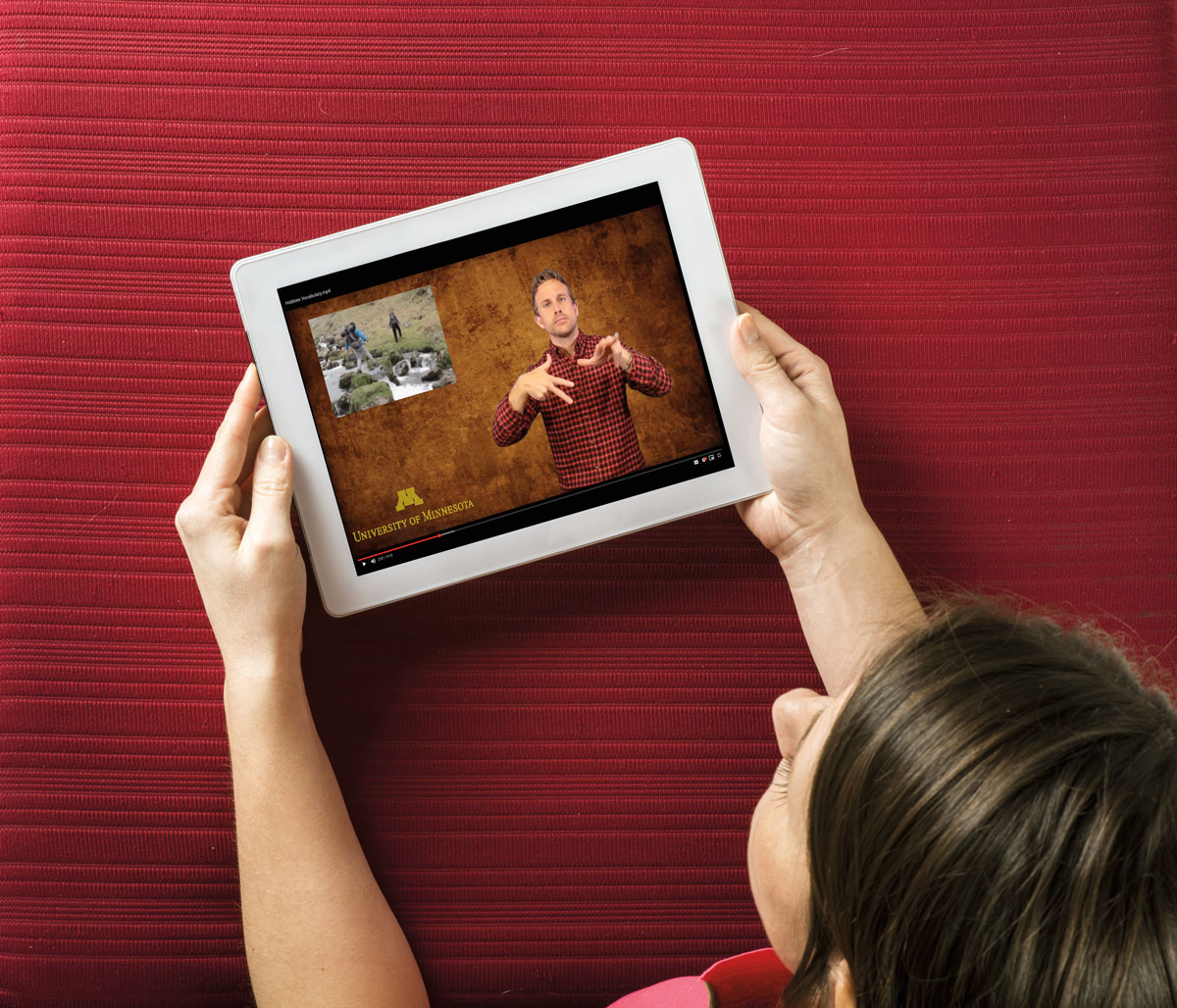In 1987, a deaf student at the U whose first language was American Sign Language (ASL) petitioned to take an English course to fulfill his second-language requirement. After he succeeded, other students began to request ASL be offered as a second language.
The dean of the College of Liberal Arts called the dean of CEHD to enlist the help of Susan Rose. At the time, Rose was an associate professor and coordinator of the master of education and deaf and hard-of-hearing (DHH) teaching licensure programs. By the summer of 1990, Rose began recruiting ASL instructors from across the country to teach the University’s first sign language courses.
“I told people I thought maybe 30 or 35 students would enroll,” recalls Rose, now professor emerita in the Department of Educational Psychology. “A few days later I looked, and 350 students had registered!”
Today, ASL is a requirement of the DHH program and one of the largest languages at the U, with roughly 700 to 800 students in classes each semester.
“People are naturally fascinated with ASL because it is a visual language and a new form of modality compared to spoken languages,” says Jonathan Penny, ASL program coordinator and instructor. Modality refers to grammatical expressions that relay intentions as well as the speaker’s belief that something is true, obligatory, desirable, or actual. “It’s also learning how to communicate spatially instead of the linear-like sequence of spoken languages. A fundamental component is learning how to express and receive language in a visual and physical modality without the use of aural and oral channels.”
For Penny and most of the instructors, ASL is their first language, and all of them are native or fluent, which Rose says opens up a whole new world for students.
“Each semester, our instructors are exposing 700 to 800 students—many of whom are undergrads—to Deaf language and culture,” says Rose. “It’s pretty inspiring.”
Learn more about the American Sign Language program at the U of M.
Story by Sarah Jergenson | Photo by Jonathan Penny | Fall 2019
 Jonathan Penny teaching
an online vocabulary
lesson on talking about
one's hobbies
Jonathan Penny teaching
an online vocabulary
lesson on talking about
one's hobbies